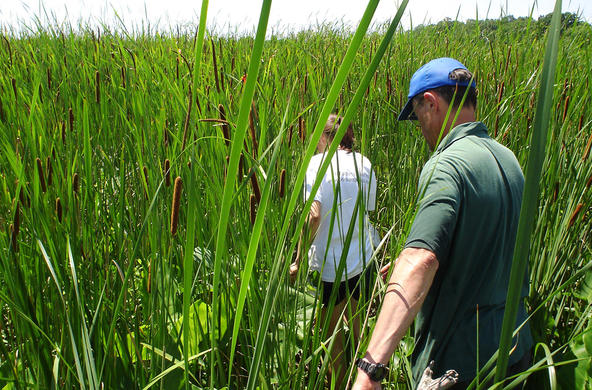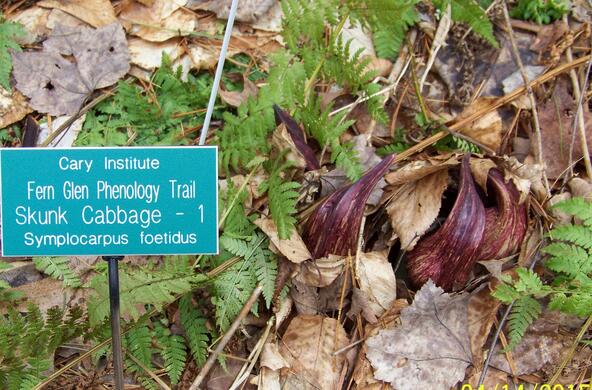Objectives
Students will know some of the major changes that have taken place in the Hudson River watershed and be able to determine what has caused these changes using graphs, tables, and maps.
Overview
Rating:
- Students view a PowerPoint of different human impacts on a global scale, taking notes and discussing questions when necessary.
- Using the jigsaw technique, students examine one type of change more closely and then explain this to other classmates.
- Students answer questions based on a short reading assignment.
Materials
- PowerPoint presentation
- Copies of HAEC group handout-one copy for the class; can be laminated and used again (color printing is best)
- Copies of HAEC Resource Packet-one copy for the class; can be laminated and used again (color printing is best)
One per Student for each of the following:
- Copies of HAEC Notes (to be completed during Power Point)
- Copies of HAEC Questions
- Copies of HAEC Summary Graphs
- Copies of HAEC Reading
Procedure
Engage
Ask the students to brainstorm the major changes that they think have taken place over the last 20, 50, 100 years. Make a chart on the board, and add to the chart as the class progresses. You can use the aerial photos in “The Hudson Valley: A Social-Ecological System” curriculum (photos exist for Westchester and Dutchess counties) to explore these changes in more detail.
Expore
Students complete the Notes handout as they follow along to a PowerPoint presentation that explores the major global changes that have taken place as a result of humans. Encourage students to answer questions such as: Is the world overpopulated? What does overpopulated mean? How do the different environmental changes interact globally? Locally? What changes do you think are the most important? Teacher notes for the powerpoint are found under each slide.
Now that students have spent some time thinking about global changes, they will get a chance to learn about different changes in the Hudson Valley.
- Divide the class into jigsaw groups, and ask them to think about the major questions at the top of the handout that will frame the activity. When conducting a jigsaw activity, you first begin with the jigsaw groups. Ideally, these groups will each have five students. Then, students number off within the jigsaw groups to form expert groups. Ultimately, they return to their jigsaw groups to explain what they learned with their expert groups. If you do not have a class with multiples of five, you can have some groups that have more than five students, or determine another arrangement that works best for you.
- Each expert group gets a set of graphs (titled “Group Handout”), which show the ‘end result’ of a human-accelerated environmental change. Students spend some time looking at these graphs, brainstorming what might have caused the change, and thinking about how to test their hypotheses. Allow students about 10 minutes to learn about their topic and answer the questions on the handout. Then distribute the appropriate “Resource Packet”. Each resource packet corresponds to a particular group.
- Students use this Resource Packet to find evidence to support their hypotheses. Once students have answered all the questions, they will return to their jigsaw group and answer the remaining questions.
- In their jigsaw groups, students should take notes on each of the other expert groups’ stories. Finally, they should complete the chart that asks them to identify which changes are responsible for the case studies discussed and think about whether these changes are temporary or permanent.
Explain
Change is the norm within ecosystems. Organisms have evolved for millennia within these regularly changing environments, adapting to succeed despite these changes, or even to take advantage of them. However, humans have greatly altered these normal changes by preventing them from occurring (such as wildfires) or alternately, by dramatically increasing the frequency, intensity and types of changes on global scales (such as soil and ocean fertilization, and climate change impacts). Humans have transformed the global landscape, polluting water, air, and land, facilitated the invasion of exotic species, and decreased biodiversity through exploitation, overuse, and habitat loss. Compounding these factors is climate change, which promises to accelerate many of these issues, and ozone depletion as a result of pollution. The growing human population is accelerating these impacts, increasing the damage around the world and affecting ecosystems in many ways.
Scientists are just beginning to understand the ways that some of these changes are interrelated. Examples include the worldwide decline in amphibians, fish, and coral reefs. Without a clearer understanding of the interactions among human impacts, it is difficult to advocate for solutions, because anything that does not address the other causes will be ineffective. Policy makers also need to be made aware of these changes so that policy can account for synergistic causes.
In the Hudson Valley watershed, the major changes that have taken place are related to land use change (and thus habitat loss), the introduction of exotic species, climate change, and the resulting loss of biodiversity.
Group 1: Lyme disease increases with decreasing forest size, suggesting that forest fragmentation in the Northeast has played a role in the increase of this disease. There is also data that demonstrates a connection between increased rodent diversity and Lyme disease; that is, the more diverse a forest ecosystem, the lower the incidence of infected nymphs.
Group 2: Research indicates there is a recent warming trend in the Hudson River, along with increasing air temperatures throughout the region. The decreases in certain fish populations, including the Atlantic Tomcod and Rainbow Smelt, are thought to be related to temperature. Both species are temperature sensitive and are at their upper limit of temperature tolerance in the Hudson.
Group 3: The decline of the pearly mussels in the Hudson River is similar to mussel declines in other eastern rivers which have suffered from the zebra mussel invasion. Zebra mussels have effectively decimated the food source of the pearly mussels. Recent research indicates that these mussels may be starving to death, as their body weights have declined substantially.
Group 4: The increase of an invasive variant of a native species, the common reed (Phragmites australis), is an interesting story in the Hudson. While the reed has been shown to have some beneficial characteristics (see the Invasive Species lessons for a more thorough exploration of this idea), it tends to decrease bird diversity in marshes. Data from Iona Island clearly shows the increase in common reed over the last 15 years. Bird diversity is compared between Iona and several other marshes that do not have large stands of common reed.
Students can learn more about each of these invaders in the Invasive Species curriculum, but this will give them a good overview of the changes.
Group 5:Although the quantity of sulfur oxides in the atmosphere has decreased since the Clean Air Act amendments, the amount of nitrous oxides has remained the same and thus the acid rain problem has not been “solved.” The data show students how a community of fish changed in a stream at Hubbard Brook. They also receive data that demonstrates how the abiotic conditions of the northeast changed during that period as a result of air pollution.
Extend
Students could research other types of changes in the Hudson Valley watershed and create a report for the class.
Evaluate
Students should submit their notes and the answers to the jigsaw activity.
Resources
Lesson Files
pdf
Notes for Powerpoint
pdf
Reading
pdf
Resource Packet
pdf
Summary Graphs
pdf
Worksheet
vnd.openxmlformats-officedocument.presentationml.presentation
HAEC PPT
pdf
HAEC Group Handout
Standards
Benchmarks for Science Literacy
5A Diversity of Life, 5D Interdependence of Life, 5E Flow of Matter and Energy, 9B Symbolic Representation, 9D Uncertainty, 12B Computation and Estimation, 12D Communication Skills, 12E Critical-Response SkillsNYS Standards
MST 1 - Mathematical analysis, scientific inquiry, and engineering design, MST 4- Physical setting, living environment and nature of science, MST 5- Engineering and computer technology to satisfy societal needs, MST 6- Interconnectedness of mathematics, science, and technology (modeling, systems, scale, change, equilibrium, optimization), MST 7- Problem solving using mathematics, science, and technology (working effectively, process and analyze information, presenting results)Credits
Cornelia Harris, Cary Institute
References:
Allan, B. F., F. Keesing, and R. S. Ostfeld. 2003. Effects of Forest Fragmentation on Lyme Disease Risk. Conservation Biology. 17:267-272.
Caraco, N. F., J. J. Cole, S. E. G. Findlay, and C. Wigand. 2006. Vascular plants as engineers of oxygen in aquatic systems. BioScience 56(3):219-225.
Daniels, R.A., K.E. Limburg, R.E. Schmidt, D.L. Strayer, and R.C. Chambers. 2005. Changes inFish Assemblages in the Tidal Hudson River, New York. American Fisheries Society Symposium, 45:471-503.
Ostfeld RS, R.A. Holt, F. Keesing. 2006. Effects of species diversity on disease risk. Ecology Letters, 9:485-498.
Pace, M. L., and D. J. Lonsdale. 2006. Ecology of the Hudson River zooplankton community. pp. 217-229. In: J. S. Levinton and J. R. Waldman (eds.). The Hudson River Estuary. Cambridge University Press, New York.
Seekell, D.A., and M.L. Pace. 2008. Analysis of a Warming Trend in the Hudson River Estuary. Estuaries and Coasts (submitted ms.)
Strayer, D.L., N.F. Caraco, J.J. Cole, S. Findlay, and M. Pace. 1999. Transformation of Freshwater Ecosystems by Bivalves. BioScience, 49: 19-27.
Wells, A.W., Nieder WC, Swift BL, O’Connor KA, Weiss CA. (2008) Temporal changes in the breeding bird community at four Hudson River tidal marshes. J. of Coastal Research. (in press).







































































